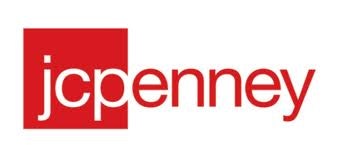J.C. Penney Company, Inc. (NYSE:JCP) is down 45% from its 52-week high of $32.55 achieved on September 19 last year. J.C. Penney has introduced all sorts of mechanism in a bid to conjure a turnaround, which has since proved to be nothing but a mirage. The company has been consistently sweeping away hopes of investors after making promises, which have so often seemed realistic. From changing CEOs to discounting products, nothing has paid off yet. Nonetheless, J.C. Penney Company, Inc. (NYSE:JCP) is not giving up yet, as it has now resumed some of the practices aborted by the former CEO, Ron Johnson.
Most recent results illustrated a worsening situation
J.C. Penney’s loss increased to $348 million, or $1.58 per share, from last year’s net loss of $163 million, or $0.75 per share, an increment of 113.5%. Total sales also declined to $2.63 billion, down from $3.15 billion reported in Q1 last year, representing a 16.4% dip. Comparable store sales were also down 16.6%. Gross margin for the quarter declined further to 30.8% compared to last year’s 37.6%. The most recent quarter’s poor showing follows a string of breathtaking statistics exhibited by the company in 2012.
During Ron Johnson’s reign, 19,000 staff lost their jobs. The company also lost $985 million spent towards the turnaround, while the December quarter saw a massive 32% decline in sales from the previous year. The company also spent more than $1 billion in the most recent quarter towards the turnaround as it continued to restore some shop-to shop stores, while welcoming new private brands.
The most recent decline in comparable stores sales is nothing new. The company has reported declines in three of the last five years for comparable store sales. It remains to be seen how this recovery campaign will work out. However, there was a huge improvement in terms of the rate of decline in online sales, which fell 10% in the most recent quarter, compared to the December quarter decline of 34.4%. The company has been bleeding cash since 2008, with sales per square meter averaging at $161, compared to $223 in 2008.
Cleaning the mess?
Reports suggest that if the the new CEO, Mike Ullman, is to turnaround the company, then he must get rid of Ron Johnson’s policy, which resulted in the company ditching promotions, discounted products, and of course, private brands and coupons. I am not being the devil’s advocate here, but I do understand that Ron Johnson joined the company with a view of turning it around.
This simply means that he is not the cause of J.C. Penney Company, Inc. (NYSE:JCP)’s misery. The fact that he abolished some of the company’s old policies does not mean he is the sole cause of its downfall. When he boarded the ship, it was already sinking, and yes, maybe his strategies were not the best at the time. That said, I must admit that the situation worsened during his tenure. But more importantly, J.C. Penney must recognize that it was doing poorly even with the old strategies in place, which Ullman is bringing back.
Coming in with the idea of cleaning up Ron Johnson’s mess is not going to help turnaround J.C. Penney Company, Inc. (NYSE:JCP). Ullman must come to the realization of the company’s adverse status, considering the widening loss margin, as witnessed in the company’s most recent quarter. Additionally, the company expects to burn too much cash during the elusive turnaround, which again calls for lines of credit as well as negotiating favorable terms with vendors in pursuit of their patience.
So, what will support the turnaround?
In the company’s most recent call transcript, (Q1 2013), it did reveal that it has set up mechanisms to see itself through the turnaround, especially the availability of cash. The company has organized a cash infusion of more than $2 billion, and indeed, this should address short-term liquidity issues. Additionally, J.C. Penney has also renegotiated terms with vendors, an agreement that should see it ease off short-term cash obligations; they are accepting later payments. This will help the company utilize a majority of its lines of credit toward the turnaround.





